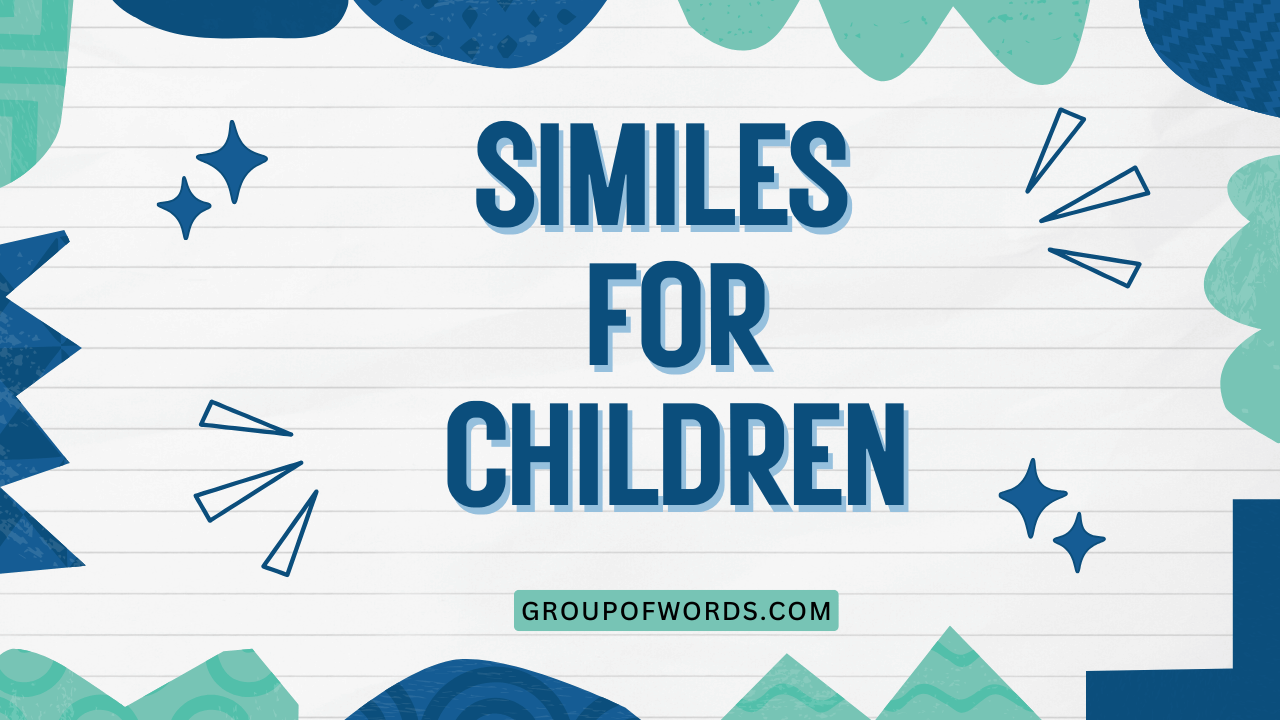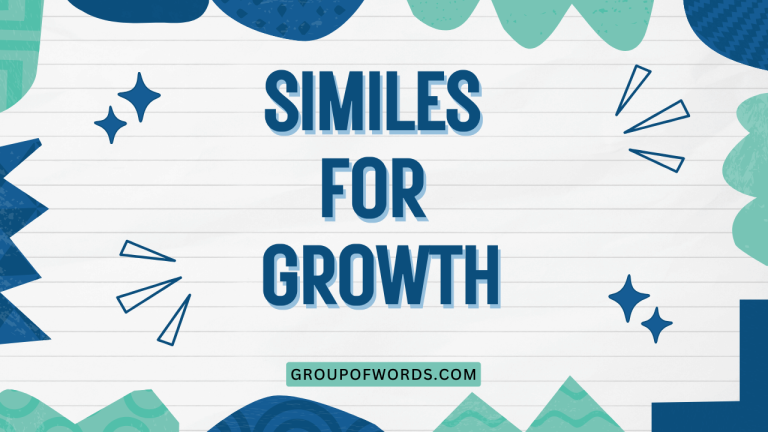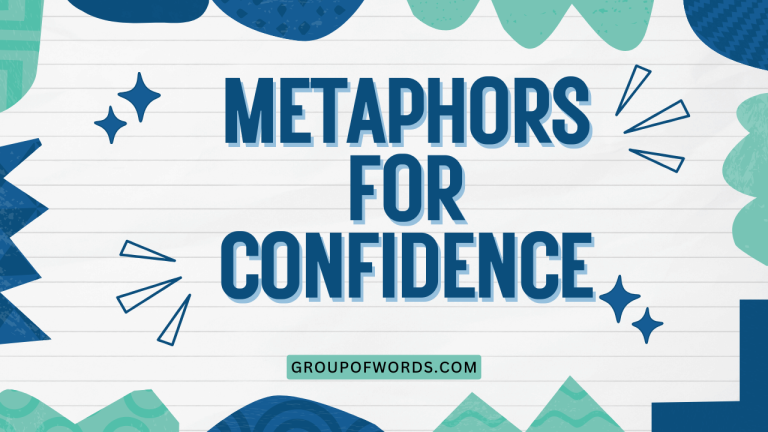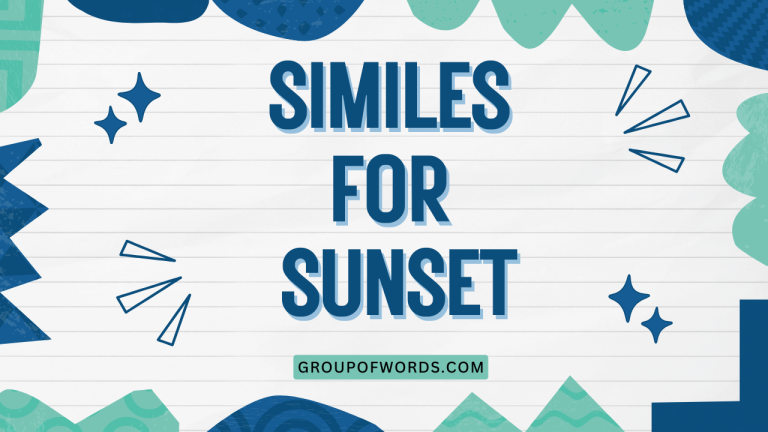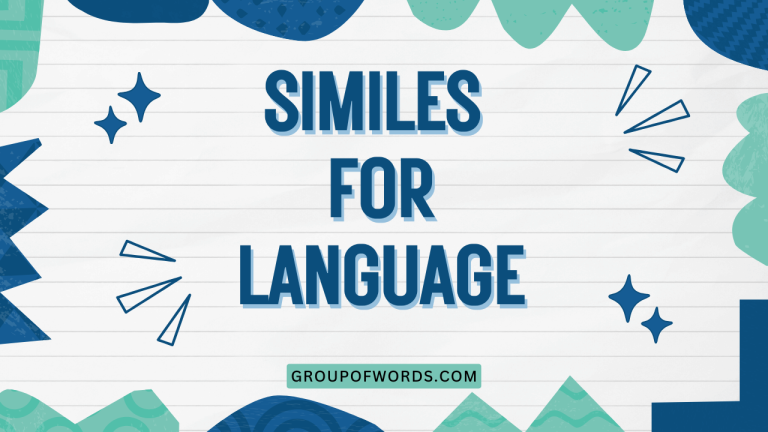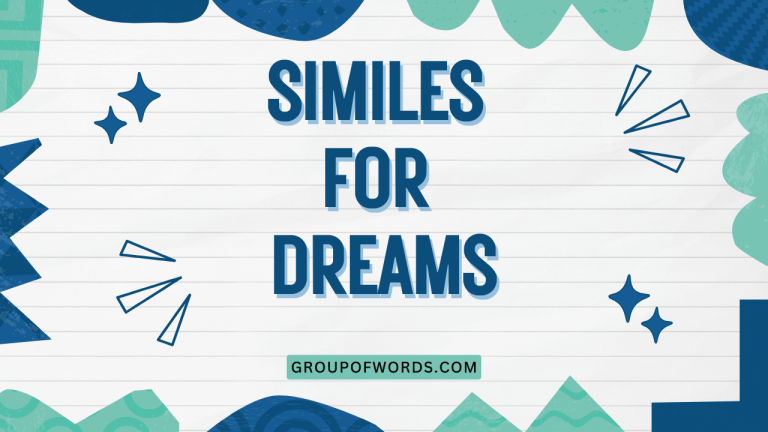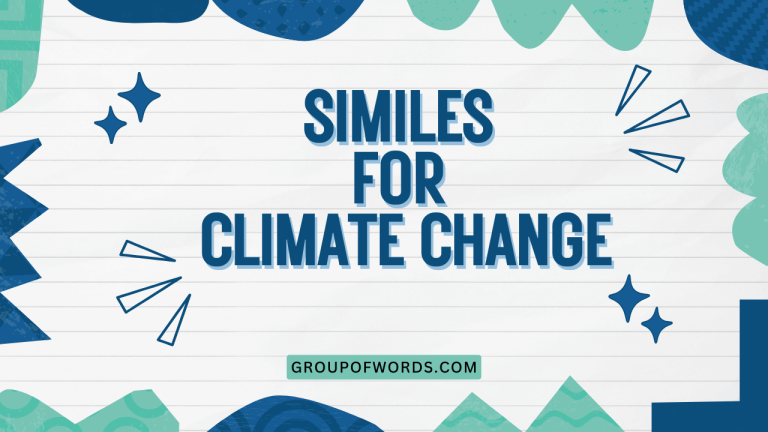Similes for Kids: Making Comparisons Fun!
Similes are a fantastic way to make your writing more colorful and exciting! They help us compare two different things using words like “like” or “as.” Understanding similes will not only improve your reading comprehension but also boost your creative writing skills.
This guide is perfect for young learners who are just starting to explore the wonderful world of similes and want to learn how to use them effectively.
Table of Contents
- What is a Simile?
- Understanding the Structure of a Simile
- Different Types of Similes
- Examples of Similes
- How to Use Similes Correctly
- Common Mistakes with Similes
- Practice Exercises
- Advanced Simile Techniques
- Frequently Asked Questions
- Conclusion
What is a Simile?
A simile is a figure of speech that compares two different things using the words “like” or “as.” The purpose of a simile is to make a description more vivid and engaging by highlighting a similarity between the two things being compared. Similes help us understand something unfamiliar by relating it to something we already know.
Think of it like this: you’re saying one thing is similar to another thing. For example, if you say “The sun is like a giant ball of fire,” you’re using a simile to compare the sun to a ball of fire. This comparison helps us understand how hot and bright the sun is.
Similes are used in all kinds of writing, from stories and poems to everyday conversations. They add color, depth, and interest to our language.
By mastering similes, you can become a more creative and expressive writer!
Understanding the Structure of a Simile
A simile has a simple structure that makes it easy to identify. It always involves two things being compared, connected by the words “like” or “as.” Let’s break down the structure:
- Thing 1: The subject being described.
- Like/As: The comparison word.
- Thing 2: What the subject is being compared to.
For example, in the simile “She is as brave as a lion,” “She” is Thing 1, “as” is the comparison word, and “a lion” is Thing 2. The simile is telling us that she shares the quality of bravery with a lion.
Another way to think about it is to use a simple formula: Subject + is like/as + Object. This formula can help you create your own similes. For instance, “The snow is like a white blanket.” Here, “The snow” is the subject, “is like” is the comparison, and “a white blanket” is the object.
Understanding this basic structure is key to both identifying similes in your reading and creating effective similes in your writing. Once you grasp the pattern, you’ll start noticing similes everywhere!
Different Types of Similes
While all similes use “like” or “as” to make a comparison, there are subtle differences in how they can be used. Understanding these variations can help you use similes more effectively.
Simple Similes
These are the most straightforward type of similes, using a direct comparison between two things. They are easy to understand and create.
Example: “The cat is as quiet as a mouse.” This simile directly compares the cat’s quietness to that of a mouse.
Descriptive Similes
These similes add more detail to the comparison, often using adjectives to describe the qualities being compared. This makes the image in the reader’s mind even clearer.
Example: “The sky was as blue as a clear ocean.” Here, the adjective “clear” adds detail to the comparison, helping us visualize the exact shade of blue.
Figurative Similes
These similes use more imaginative and less literal comparisons. They often compare abstract concepts or emotions to tangible things.
Example: “Her anger was like a raging fire.” This simile compares the abstract emotion of anger to the concrete image of a raging fire, conveying the intensity of her anger.
Extended Similes
An extended simile develops the comparison over several sentences, providing more details and creating a more vivid image. This type of simile allows for a deeper exploration of the similarities between the two things being compared.
Example: “The runner was like a cheetah on the track, swift and graceful, moving with incredible speed and agility, leaving everyone else in the dust.” This extended simile paints a detailed picture of the runner’s speed and grace.
Examples of Similes
Let’s explore a variety of similes to help you understand how they work in different contexts. The following tables provide numerous examples, categorized by common themes.
Similes Describing Appearance
This table shows examples of similes used to describe how things or people look.
| Simile | Explanation |
|---|---|
| Her eyes were as blue as the summer sky. | Comparing the color of her eyes to the color of the sky. |
| His hair was like spun gold. | Comparing the color and texture of his hair to gold. |
| The building was as tall as a mountain. | Comparing the height of the building to a mountain. |
| She was as pretty as a picture. | Comparing her beauty to a beautiful picture. |
| The snow was like a white blanket covering the ground. | Comparing the appearance of the snow to a blanket. |
| His beard was as white as snow. | Comparing the color of the beard to snow. |
| Her skin was like porcelain. | Comparing the texture and appearance of her skin to porcelain. |
| The moon was like a silver coin in the sky. | Comparing the shape and color of the moon to a silver coin. |
| The stars were like diamonds scattered across the night. | Comparing the brightness and appearance of stars to diamonds. |
| He was as thin as a rake. | Comparing his thinness to the thinness of a rake. |
| The dress was as red as a ruby. | Comparing the color of the dress to a ruby. |
| The flowers were as colorful as a rainbow. | Comparing the variety of colors in the flowers to a rainbow. |
| The old house looked like a haunted castle. | Comparing the appearance of the old house to a haunted castle. |
| The puppy was as fluffy as a cloud. | Comparing the texture and appearance of the puppy’s fur to a cloud. |
| The cake was as round as a plate. | Comparing the shape of the cake to a plate. |
| The lake was as smooth as glass. | Comparing the surface of the lake to glass. |
| The statue was as still as a rock. | Comparing the stillness of the statue to a rock. |
| The painting was like a window to another world. | Comparing the effect of the painting to looking through a window. |
| His face was as pale as a ghost. | Comparing the paleness of his face to a ghost. |
| The leaves were like golden coins falling from the trees. | Comparing the color and falling motion of leaves to golden coins. |
| The mountains were as majestic as ancient kings. | Comparing the grandeur of the mountains to ancient kings. |
| The sunset was like a fiery painting in the sky. | Comparing the colors and beauty of the sunset to a painting. |
| The children were as bright-eyed as newborn fawns. | Comparing the alertness and innocence of the children to fawns. |
Similes Describing Behavior
This table provides examples of similes that describe how people or animals act.
| Simile | Explanation |
|---|---|
| He eats like a pig. | Comparing his eating habits to those of a pig. |
| She sings like an angel. | Comparing her singing voice to an angel’s. |
| They fought like cats and dogs. | Comparing their fighting behavior to that of cats and dogs. |
| He runs as fast as the wind. | Comparing his running speed to the speed of the wind. |
| She slept like a log. | Comparing her sleeping to the stillness of a log. |
| He works like a beaver. | Comparing his work ethic to the industriousness of a beaver. |
| She dances like a butterfly. | Comparing her dancing movements to the light and graceful movements of a butterfly. |
| He roars like a lion. | Comparing his loud voice to the roar of a lion. |
| She swims like a fish. | Comparing her swimming ability to that of a fish. |
| They argue like siblings. | Comparing their arguing style to the typical arguments between siblings. |
| He follows her like a shadow. | Comparing his constant presence near her to a shadow. |
| She watches over them like a hawk. | Comparing her attentiveness and protectiveness to a hawk watching its prey. |
| He slithers like a snake. | Comparing his movements to the slithering of a snake. |
| She jumps like a kangaroo. | Comparing her jumping ability to that of a kangaroo. |
| He chatters like a monkey. | Comparing his talkativeness to the chattering of a monkey. |
| She gossips like a magpie. | Comparing her gossiping habits to the chattering of a magpie. |
| He struts like a peacock. | Comparing his proud and showy behavior to the strutting of a peacock. |
| She glides like a swan. | Comparing her graceful movements to the gliding of a swan. |
| He sulks like a child. | Comparing his sulking behavior to that of a child. |
| She clings like a vine. | Comparing her clingy behavior to a vine wrapping around something. |
| He hoards like a squirrel. | Comparing his hoarding habits to the way a squirrel gathers and stores nuts. |
| She schemes like a fox. | Comparing her clever and cunning plans to the cunning of a fox. |
| He stings like a bee. | Comparing his sharp words or actions to the sting of a bee. |
Similes Describing Feelings and Emotions
This table shows examples of similes used to describe how people feel.
| Simile | Explanation |
|---|---|
| He was as happy as a clam. | Comparing his happiness to the supposed contentment of a clam. |
| She was as nervous as a long-tailed cat in a room full of rocking chairs. | Comparing her nervousness to a cat in a dangerous situation. |
| He felt like a fish out of water. | Comparing his feeling of being out of place to a fish out of water. |
| She was as light as a feather. | Comparing her feeling of happiness and freedom to the lightness of a feather. |
| He was as angry as a hornet. | Comparing his anger to the aggressive nature of a hornet. |
| She felt as free as a bird. | Comparing her feeling of freedom to the unrestricted flight of a bird. |
| He was as cold as ice. | Comparing his lack of emotion to the coldness of ice. |
| She felt like she was walking on air. | Comparing her feeling of elation to walking on air. |
| He was as stubborn as a mule. | Comparing his stubbornness to the well-known stubbornness of a mule. |
| She felt like a million dollars. | Comparing her feeling of well-being and happiness to having a lot of money. |
| He was as quiet as a church mouse. | Comparing his quietness to the quietness of a mouse in a church. |
| She felt like she was drowning in sorrow. | Comparing her overwhelming sadness to the feeling of drowning. |
| He was as brave as a lion. | Comparing his bravery to the courage of a lion. |
| She felt as though her heart was breaking. | Comparing her deep sadness to the physical sensation of a broken heart. |
| He was as busy as a bee. | Comparing his state of being busy to the constant activity of a bee. |
| She felt like she had won the lottery. | Comparing her joy and excitement to the feeling of winning the lottery. | He was as proud as a peacock. | Comparing his pride and showiness to the display of a peacock’s feathers. |
| She felt as nervous as a cat on a hot tin roof. | Comparing her extreme nervousness to a cat in a very uncomfortable situation. |
| He was as eager as a puppy. | Comparing his enthusiasm and eagerness to the boundless energy of a puppy. |
| She felt like she was on top of the world. | Comparing her feeling of success and happiness to being in the highest possible place. |
| He was as gentle as a lamb. | Comparing his gentleness and kindness to the docile nature of a lamb. |
| She felt like she was floating on a cloud. | Comparing her feeling of lightness and happiness to floating on a cloud. |
| He was as wise as an owl. | Comparing his wisdom and knowledge to the perceived wisdom of an owl. |
Similes Describing Sounds
This table provides examples of similes used to describe different types of sounds.
| Simile | Explanation |
|---|---|
| Her laughter was like music to his ears. | Comparing the pleasant sound of her laughter to music. |
| The thunder was as loud as a bomb. | Comparing the loudness of the thunder to the sound of a bomb. |
| His voice was like nails on a chalkboard. | Comparing the unpleasant sound of his voice to nails scratching a chalkboard. |
| The wind howled like a wolf. | Comparing the sound of the wind to the howling of a wolf. |
| The rain sounded like a drum. | Comparing the rhythmic sound of the rain to drumming. |
| The baby’s cry was like a siren. | Comparing the piercing sound of the baby’s cry to a siren. |
| The rustling leaves sounded like whispers. | Comparing the soft sound of rustling leaves to whispering. |
| The car engine roared like a lion. | Comparing the loud sound of the car engine to the roar of a lion. |
| The clock ticked as loud as a heartbeat. | Comparing the noticeable ticking of the clock to the sound of a heartbeat. |
| The creaking door sounded like a ghost. | Comparing the eerie sound of the creaking door to a ghost. |
| Her singing was like a bird’s song. | Comparing the melodious quality of her singing to a bird’s song. |
| The waves crashed like thunder. | Comparing the powerful sound of the waves to thunder. |
| The cicadas buzzed like electric saws. | Comparing the loud buzzing of cicadas to electric saws. |
| The church bells rang like joyful trumpets. | Comparing the festive sound of the church bells to trumpets. |
| The breaking glass sounded like shattering ice. | Comparing the sharp sound of breaking glass to shattering ice. |
| The dripping faucet sounded like a ticking bomb. | Comparing the annoying sound of the dripping faucet to a bomb about to explode. |
| The distant train whistle sounded like a mournful cry. | Comparing the sad sound of the train whistle to a cry. |
| The crackling fire sounded like a hungry monster. | Comparing the sounds of the fire to a monster eating. |
| The squeaky swing sounded like a rusty hinge. | Comparing the sound of the squeaky swing to a rusty hinge. |
| The owl hooted like a lonely ghost. | Comparing the owl’s hoot to the sound a lonely ghost might make. |
| The popcorn popped like tiny explosions. | Comparing the sound of popcorn popping to small explosions. |
| The leaves crunched underfoot like crispy chips. | Comparing the sound of leaves being stepped on to the sound of eating crispy chips. |
| The keyboard clacked like a typewriter. | Comparing the sound of the keyboard to an old-fashioned typewriter. |
How to Use Similes Correctly
Using similes correctly involves choosing appropriate comparisons that enhance your writing. Here are some guidelines to follow:
- Choose Relevant Comparisons: Make sure the two things you are comparing have a clear similarity. The comparison should make sense and add to the description.
- Be Specific: The more specific you are, the more vivid the image will be. Instead of saying “He was as fast as something,” say “He was as fast as a race car.”
- Avoid Clichés: Clichés are overused similes that have lost their impact. Try to come up with original comparisons. Instead of “as blind as a bat,” try “as blind as a mole in a tunnel.”
- Consider Your Audience: Make sure your similes are appropriate for your audience. Young children might not understand complex or abstract comparisons.
Remember, the goal is to create a clear and engaging image in the reader’s mind. A well-chosen simile can make your writing come alive!
Common Mistakes with Similes
Even though similes are relatively simple, there are some common mistakes that people make when using them. Here are a few to watch out for:
| Incorrect | Correct | Explanation |
|---|---|---|
| He is like tall. | He is as tall as a tree. | Similes need two nouns to compare. |
| She sings like a bird sings. | She sings like a bird. | Avoid repeating the verb. |
| The car is as fast. | The car is as fast as lightning. | The comparison needs a second element. |
| He is like a happy person. | He is as happy as a clam. | Choose a more vivid and specific comparison. |
By avoiding these common mistakes, you can ensure that your similes are clear, effective, and add impact to your writing.
Practice Exercises
Now it’s your turn to practice using similes! Try these exercises to test your understanding and improve your skills.
Exercise 1: Complete the Simile
Fill in the blank to complete each simile.
| Question | Answer |
|---|---|
| 1. The snow was as white as __________. | 1. The snow was as white as snow. |
| 2. He was as quiet as a __________. | 2. He was as quiet as a mouse. |
| 3. She was as busy as a __________. | 3. She was as busy as a bee. |
| 4. The sun is like a giant __________. | 4. The sun is like a giant ball of fire. |
| 5. The road was as bumpy as __________. | 5. The road was as bumpy as a washboard. |
| 6. The coffee was as hot as __________. | 6. The coffee was as hot as lava. |
| 7. The music was as loud as __________. | 7. The music was as loud as thunder. |
| 8. The pillow was as soft as __________. | 8. The pillow was as soft as a cloud. |
| 9. The moon was like a __________. | 9. The moon was like a silver coin. |
| 10. The boy was as tall as a __________. | 10. The boy was as tall as a tree. |
Exercise 2: Create Your Own Similes
Write a simile for each of the following prompts.
| Prompt | Possible Answer |
|---|---|
| 1. Describe the sound of the rain. | 1. The rain sounded like a thousand tiny drums. |
| 2. Describe how a cat moves. | 2. The cat moves like a shadow in the night. |
| 3. Describe the feeling of being nervous. | 3. Being nervous feels like butterflies in your stomach. |
| 4. Describe a bright star. | 4. The star shone like a diamond in the sky. |
| 5. Describe a fast runner. | 5. The runner was as fast as a cheetah. |
| 6. Describe a quiet room. | 6. The room was as quiet as a tomb. |
| 7. Describe a warm fire. | 7. The fire felt like a warm hug. |
| 8. Describe a messy room. | 8. The room looked like a tornado had hit it. |
| 9. Describe a sweet smile. | 9. Her smile was as sweet as honey. |
| 10. Describe a cold wind. | 10. The wind was as cold as ice. |
Advanced Simile Techniques
For those who want to take their simile skills to the next level, here are some advanced techniques:
- Subverting Expectations: Create similes that surprise the reader by comparing things in unexpected ways. This can make your writing more memorable.
- Layering Similes: Use multiple similes in a single sentence or paragraph to create a richer and more detailed description.
- Combining with Metaphors: Use similes in conjunction with metaphors to create even more powerful imagery.
By experimenting with these techniques, you can develop your own unique style and create truly remarkable similes.
Frequently Asked Questions
Here are some common questions about similes:
- What is the difference between a simile and a metaphor?
A simile compares two things using “like” or “as,” while a metaphor states that one thing is another thing. For example, “She is like a rose” (simile) versus “She is a rose” (metaphor).
- Can a simile be a question?
Yes, a simile can be phrased as a question to make a point or to challenge the reader’s thinking. For example, “Is life like a box of chocolates?”
- Why are similes important in writing?
Similes make writing more vivid, engaging, and memorable. They help readers understand complex ideas by relating them to familiar things.
- How can I come up with creative similes?
Pay attention to the world around you and notice similarities between different things. Read widely and observe how other writers use similes. Practice writing your own similes regularly.
- Are there any words besides “like” and “as” that can be used in similes?
While “like” and “as” are the most common, you can also use words such as “resembles” or “similar to,” although these are less common in simple similes.
- Can a simile be too complex?
Yes, a simile can be too complex if the comparison is too abstract or unfamiliar to the reader. It’s important to choose comparisons that are easy to understand.
- How do I know if a simile is a cliché?
If you’ve heard the simile many times before, it’s probably a cliché. Try to come up with a more original comparison.
- Can similes be used in everyday conversation?
Absolutely! Similes can make your everyday conversations more colorful and expressive. Try using them to describe your feelings or experiences.
Conclusion
Similes are a powerful tool for making your writing more vivid and engaging. By using “like” or “as” to compare two different things, you can create a clear and memorable image in the reader’s mind.
Understanding the structure and types of similes, avoiding common mistakes, and practicing regularly will help you master this important figure of speech.
Remember to choose relevant and specific comparisons, avoid clichés, and consider your audience. With practice, you’ll be able to use similes effectively in all kinds of writing, from stories and poems to everyday conversations.
Keep exploring, keep experimenting, and have fun with similes!
